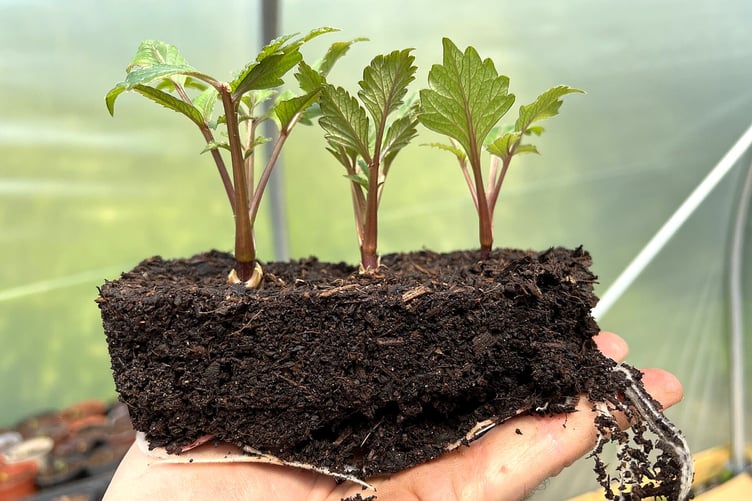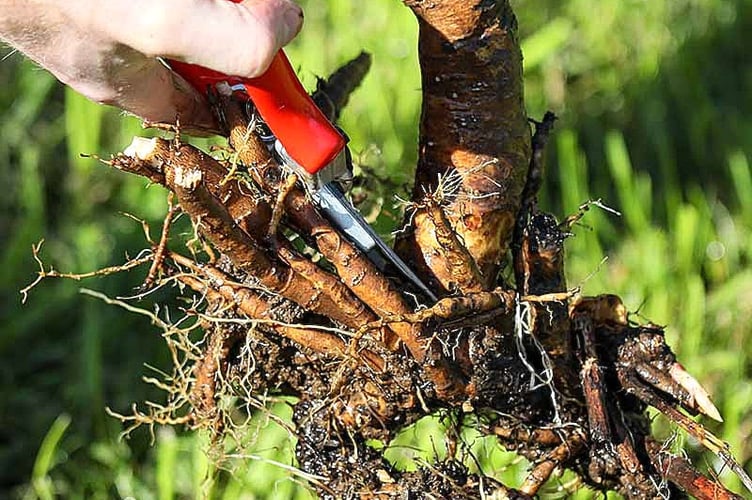NEW plants that won’t cost you anything - who can resist that? And now’s the time do it, particularly as plants in nurseries and garden centres have never been so expensive.
You can get unlimited numbers of plants for free by collecting seed, taking cuttings, layering or dividing root-balls, and all you need to do the job is a few containers, some gritting compost and envelopes to store the seeds.
So how to get started? Taking cuttings from favourite plants is the simplest and most common way of getting something for nothing, and these are the most popular ways of doing it.
BASAL CUTTINGS are new growths which shoot up in spring from a crown or tuber. Remove them at ground level and pot them up in gritty compost. Ideal plants to use include poppies, acanthus phlox, verbascums and primulas.
STEM CUTTINGS propagation involves removing pieces of stem and potting them up to encourage them to develop roots. Softwood stem cuttings can be taken now but those from hardwood plants are best taken in autumn and winter.

Softwood cuttings can be taken from shrubs like hydrangeas and hardwood cuttings from perennials like forsythia, cornus and willow. Hardwood cuttings can take several months to produce roots so leave them for at least a year before transplanting term into the garden.
LAYERING simply involves bending a shoot down to soil level, pegging it down and encouraging it to root. You can try this with shrubs like dogwoods, rhododendrons, azaleas, honeysuckle, wisteria and viburnums.
Other plants that can be layered include border carnations which can be bent over, pegged to the ground, covered with loam and left to root. Fruit like blackberries, loganberries and tayberries can also be propagated by layering and once they make substantial growth can be cut from the parent plant.
DIVISION is usually used for herbaceous varieties after plants have started into growth. Dig them up and break into pieces before replanting the young and vigorous outside parts.
SAVING AND SOWING SEED. Leave a few seed heads on perennial plants after they have flowered. This can be saved in an envelope, kept in a dry place and sowed next spring. It’s as simple as that, but there are a few things you should note. For instance you shouldn’t save seed from F1 (hybrid) varieties as the results won’t resemble the parent plants.
It’s always satisfying to eat vegetables that have been grown for nothing from seed from your garden for instance, broad beans should be left on the plant until the pods become dry and wrinkled. Dry in a warm place with a good flow of air.
French and runner beans should be treated in the same way and peas should be allowed to mature in their pods until the seeds start to rattle. When the pods are dry, shell the peas and store them until spring.

Growing your own plants isn’t rocket science but it’s wise to start off with something uncomplicated like fuchsias or geraniums, just to prove how simple it usually is to produce a dazzling display for next to nothing.
JUST THE JOB
What to do in West Somerset gardens in June
June’s an all-action month, with pests and diseases swarming in from all sides, weeds fairly storming out of the ground.
On the bright side, frost danger should be well and truly over – and the joys of those first new potatoes can only be days away now.
FLOWERS
After flowering has finished, give wisteria a summer prune, cutting all the long side-shoots back to 20cm to encourage flowering next spring.
Pinch out the tips of fuchsias and bedding plants to encourage bushier growth and give containers and hanging baskets a liquid feed every few weeks.
Continue planting summer bedding in pots and borders and water regularly. Fill any gaps in borders with pots of tall bulbs such as fragrant lilies. Lift and store tulip bulbs after flowering.
VEGETABLES
Outdoor tomatoes and a whole range of maincrop brassicae should be ready for transplanting this month. Give them plenty of water. Runner beans, brought on under glass and suitably hardened off, should also be ready for the great outdoors.
Apply tomato feed to fruiting vegetable crops including courgettes, pumpkins and chillies and spread mulch around thirsty crops such as beans and courgettes to hold in the moisture.
Take softwood cuttings of herbs such as marjoram and sage and plant in gritty compost.
FRUIT
Summer pruning of apples should begin when the new side-shoots reach pencil-thickness. Take them back to four or five leaves from the base. Trained pears respond well to similar treatment.
Plums, cherries and peaches may also be pruned as the next couple of months are the least likely times to contract silverleaf disease through pruning.
In all cases cut just above an outward-facing bud with sharp secateurs. Grapes benefit from attention this month: cut off fruiting shoots at a couple of leaves beyond the bunch and take back non-fruiting shoots to one leaf from the base.
PEST CONTROL
Pests to watch out for this month include the flea beetle on vegetables and the gooseberry sawfly which can strip a bush overnight.
Cabbage Whites are emerging in force and can be dealt with by fortnightly sprays of bactospein, a culture of a caterpillar-specific bacterium.
Pinch out the tops of broad beans to reduce the risk of aphids.
GREENHOUSE
In addition to watering and feeding with liquid manure, tomato flowers should be tapped occasionally to improve the chances of pollination. Increase greenhouse shading and ventilation to keep the temperature down on hot days and water more regularly as heat and light levels increase.





Comments
This article has no comments yet. Be the first to leave a comment.